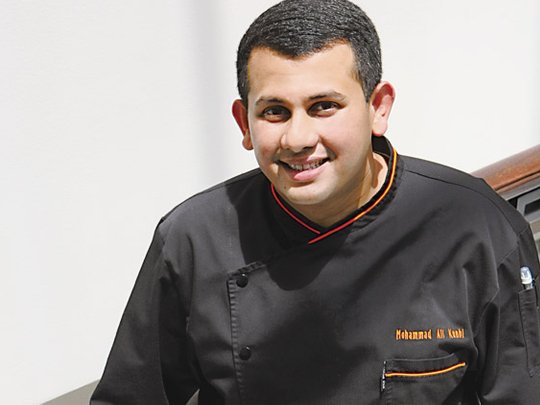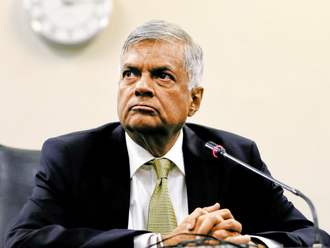
Singapore is certainly synonymous with food — but the cuisine is not pretentious. It is not known for its high-end epicurean delicacies and is not easy to categorise. What it is though, is delicious food fused with varied ethnic tastes, which is why this tiny island has been dubbed the undisputed food paradise of the east.
Singaporean food is representative of the country, says Mohammad Ali Kunhi, Executive Sous Chef, Capital Club. "In Singapore, we love our food; it is part of our everyday life, culture, celebrations and entertainment. But we don't take it seriously — how can we when everything is such a marriage of tastes, cultures and varied ethnic groups? You have the Chinese with their signature Hainanese chicken rice, the South Indian, Tamil descent ‘mamas' who are famous for their roti paratha and the Malay [who] add a touch of sambal (chilli paste) to spice anything."
Dishes to suit every taste
Tastes and flavours have fused to create a culinary tradition that is as distinctive as the various people who call the island home.
"What I love about Singapore is the fact that there is delicious, fresh food available around-the-clock in all parts of the city and everyone from street-stall hawkers to fine dining restaurants lend their interpretation to the dish," says the chef. "So you can have laksa, which is almost like the national dish of Singapore and has Malay origins, in various styles. But whatever your preference, from laksa lemak to katong laksa, the dish is prepared in many ways and each family will have a recipe that's been passed down from generations."
If you are still looking at boxing this cuisine, then it would be safe to say the predominant flavours and some of the common ingredients are shallots, coconut milk, lemon grass, galangal, sambal paste, turmeric, cumin and fragrant lime leaves.
It's a nation that loves its meats, from fish head curries and steamed chicken to sting ray soups, and stir-fried beef. Vegetables are in soups and in stir-fries, and all ingredients are accompanied by staples such as noodles and steamed jasmine rice. Dairy is used only in tea and fruits are mainly tropical with leeches, mangoes, and papayas favourites.
Bringing the island flavour to Dubai
Despite its expatriate population, Dubai doesn't offer many options for Singaporean food. "One of my goals at Capital Club is to introduce authentic Singaporean dishes to the people of Dubai," says chef Kunhi. "Many of our members are well-travelled and have experienced the richness of Singaporean food. They appreciate the original flavours that haven't been tampered with in an attempt to adopt them to the western palate."
In keeping with this endeavour, chef Kunhi shares three popular Singaporean dishes that represent the various communities. We have katong laksa, a soupy, noodle-based dish with Malay origins that is a strong contender for the title of Singapore's national dish. Next is Hainanese chicken rice that was brought to Singapore by the Hainanese, who originated from the Hainan province of China. The dish is usually served with several dips, including chilli sauce and ginger paste in tempered sesame oil, and sliced cucumber.
And finally, ending this experience on a sweet note is sago gula melaka, a dessert that is sublime in its simplicity and taste.
Expatriates from Singapore talk about their favourite food
Serihana Koh, cabin crew
My favourite dish from Singapore is laksa lemak, a soupy, spicy dish that is rich in coconut milk. What I love about Singaporean food is that it can range from almost bland to hot and spicy, and is aromatic with so many flavours fused together. Like Arabic food or French food, there is no one distinct flavour and the various ethnic communities of Singapore each add something to the cuisine. When visiting Singapore, I would recommend Straits Kitchen at the Grand Hyatt, which is one of the few fine-dinning halal-certified restaurants and Carousel at the Royal Plaza Hotel.
Kamisah Abdul Rahim, Membership Relation Manager, Capital Club
My all-time favourite dish that I really miss is penang laksa - it's a yellow curry with noodles, spiced with sambal and cashew paste. The best place to eat in Singapore is at one of the various Hawkers Centres that are open 24 hours; they are inexpensive, very casual and offer a wonderful mix of everything. Though I'm Malay, I love Indian food, especially the spicy fish head curry eaten on a banana leaf with rice, washed down with refreshing lime juice. Another South Indian dish I love is appam that is generally eaten with orange sugar for breakfast. If in Dubai you see a bunch of us eating appams with orange sugar at Appa Kadai, you will know that we are from Singapore.
Kui Lan, Teacher, Dubai International Arts Centre
My favourite dish is Hainanese Chicken rice, but I'm really particular about the way it's prepared. I use my mother's recipe that's been passed down generations and calls for everything prepared from scratch rather than bottled, ready-made ingredients and spices. In Singapore, we eat all the time and talk about food all the time; at most gatherings, you'll find women exchanging recipes. Food is not just for filling our stomachs - for Singaporeans, it's an emotional concept. The best place to eat in Singapore are the local food courts. These are found in all neighbourhoods and offer popular dishes such as Chinese duck rice that is our equivalent of McDonalds's and costs about Dh10. We have a street food culture and with everyone working, there is hardly any time to prepare elaborate meals at home, so everyone just eats out.










_resources1_16a30b3523c_small.jpg)

